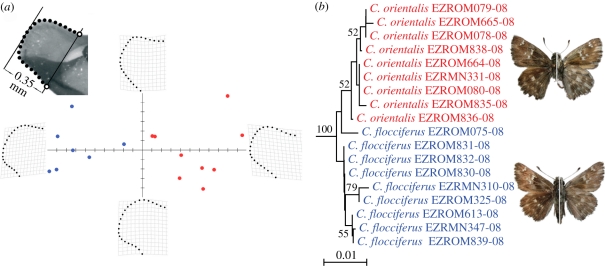Figure 3.
Carcharodus flocciferus is paraphyletic with respect to C. orientalis. The two species are morphologically very similar and accurate identifications were possible based on the combined results of geometric and linear morphometry of the male genitalia. (a) Scatter plot of relative warp 1 and relative warp 2 explaining most of the variance reveals the presence of two discrete clusters of cuiller tip shape. The upper left image illustrates the landmarks (open circles) and semi-landmarks (black dots) used to describe the shape of the cuiller. (b) NJ tree of COI barcodes of Romanian Carcharodus orientalis and C. flocciferus with bootstrap values more than 50% indicated.

